Do you have a question about the Chevrolet 2007 Corvette and is the answer not in the manual?
Details manual and power seat adjustments, including lumbar and bolster support.
Explains proper safety belt usage, why they work, and precautions for all occupants.
Covers proper use of safety belts for older children and guidelines for infants and young children.
Describes the types of airbags, their locations, deployment, and safety considerations for occupants.
Provides guidance on regularly checking safety belt components and airbag coverings for proper function.
Explains the vehicle's key system, including the use of the key for various locks and cautions about leaving keys with children.
Details the keyless access system, its operation, FCC compliance, and transmitter matching procedures.
Covers door locks, power door locks, automatic locking, and lockout protection features.
Explains power window operation, indexing, initialization, and cautions about leaving windows closed.
Describes the vehicle's alarm system, its operation, and how to arm/disarm it.
Covers new vehicle break-in procedures, ignition positions, and starting the engine.
Details the function of the pushbutton start system and accessory/off modes.
Explains the different gear positions (P, R, N, D, S) and shift lock control.
Details the shift pattern, how to operate the transmission in various gears, and parking brake usage.
Describes manual and automatic dimming rearview mirrors, compass operation, and map lamps.
Explains the system's identification, operation, programming, and security features.
Details the locations and usage of various storage compartments like the glove box and center console.
Covers the removable roof panel, including procedures for its removal, storage, and installation.
Explains the operation and care of both manual and power convertible tops.
Provides a diagram and description of the main components of the instrument panel, labeled A through S.
Explains the function and operation of the hazard warning flashers.
Details how to adjust the steering wheel for comfortable driving and entry/exit.
Covers the operation of the turn signals, lane-change signals, headlamp controls, and fog lamps.
Explains the operation of the windshield wipers and washers, including different speed and delay settings.
Details how to set, resume, increase, and decrease speed using cruise control, including safety cautions.
Explains the operation of exterior lamps, including automatic mode, parking lamps, and headlamps.
Describes how the DRL system works and the conditions under which the front turn signal lamps illuminate.
Explains the use and operation of fog lamps for improved visibility.
Describes the automatic headlamp system that controls lamps based on ambient light conditions.
Explains how to adjust the brightness of the instrument panel lighting and interior lights.
Details the information displayed on the HUD, its modes, and how to adjust brightness and position.
Explains the use of the accessory power outlet and cautions regarding electrical equipment.
Covers the dual automatic climate control system, its automatic and manual operations, and sensors.
Explains modes to clear fog and frost from the windshield and windows.
Describes various warning lights and gages on the vehicle and their significance.
Provides an overview of the instrument panel cluster, including its gauges and indicators.
Explains how to read the speedometer and odometer, and what happens when a new odometer is installed.
Describes the safety belt reminder light and chime that alerts occupants to fasten their belts.
Explains the function of the airbag readiness light and what to do if it stays on.
Details the passenger airbag status indicator and its meaning regarding airbag deployment.
Explains the voltmeter gage and what low voltage readings indicate.
Describes the shift light that indicates when to shift for optimal fuel economy.
Explains the brake system warning light and what to do if it stays on.
Describes the ABS warning light and its function.
Explains the TCS warning light and what it indicates about system operation.
Details the Active Handling System light and its indication of system operation or problems.
Explains the engine coolant temperature gage and what it means if the engine is too hot.
Describes the tire pressure warning light and its indication of underinflated tires.
Explains the check engine light, its causes, and the importance of addressing malfunctions.
Details various warning and informational messages displayed on the Driver Information Center (DIC).
Covers how to personalize vehicle features like seat positions, mirrors, and display settings.
Provides an overview of the audio system, including radio, CD, and MP3 features.
Explains how to find radio stations using the BAND, SEEK, SCAN, and preset buttons.
Details the features and services offered by XM™ satellite radio, including subscription information.
Explains common CD messages and potential reasons for them, such as temperature or dirt.
Provides guidance on burning and playing MP3 CD-R discs, including file format and folder structure.
Encourages using GM dealers for service and highlights genuine GM parts and trained technicians.
Discusses gasoline octane requirements, specifications, California fuel, and additives.
Explains the recommended octane rating for different engines and the effects of using lower octane fuel.
Provides cautions and general advice for checking components under the hood.
Illustrates and identifies major components in the engine compartment for LS2 and LS7 engines.
Details how to check engine oil levels, including specific procedures for Z06 models.
Explains how the engine oil life system works and how to reset it after an oil change.
Provides guidance on the safe handling, use, and disposal of used engine oil.
Covers inspection and replacement of engine air cleaner filters for different engine types.
Explains how to check and change automatic transmission fluid, recommending dealership service.
Discusses checking clutch fluid levels and when to seek service for potential leaks.
Explains the cooling system, coolant type, and adding coolant when levels are low.
Covers engine coolant temperature, overheating warnings, steam from the engine, and operating modes.
Details the components of the cooling system, including the electric fan and coolant surge tank.
Explains when to check power steering fluid and what type to use.
Provides instructions on what type of washer fluid to use and how to add it, including cautions.
Covers brake fluid, its level, checking, and what to add, with cautions on improper fluid.
Explains how to identify brake wear and discusses brake pedal travel and adjustment.
Discusses battery types, replacement, and vehicle storage recommendations.
Provides detailed, safe procedures for jump starting a vehicle with a dead battery.
Explains how to check the rear axle lubricant level and what type of lubricant to use.
Guides on replacing various bulbs, including HID lighting, with cautions.
Identifies and explains the replacement of headlamp, front turn signal, and parking lamp bulbs.
Details the procedure for replacing taillamps, turn signals, and stoplamps, including bulb numbers.
Advises on windshield replacement, ensuring compatibility with HUD systems.
Explains how to inspect, remove, and replace windshield wiper blades.
Covers tire maintenance, including inflation, wear, overloading, and replacement advice.
Provides cautions and procedures for driving at high speeds, including tire pressure adjustments.
Explains the TPMS, how it alerts drivers to low pressure, and malfunction indicators.
Details the information found on a tire's sidewall, such as size, construction, and load ratings.
Provides definitions for various tire-related terms like air pressure, aspect ratio, and treadwear.
Explains the UTQG system for grading tires based on treadwear, traction, and temperature.
Discusses the importance of alignment and balance and when to check them.
Guides on when and how to replace wheels, emphasizing the use of correct parts.
Warns against using tire chains due to clearance issues and potential damage.
Provides critical safety cautions and procedures for lifting the vehicle with a jack.
Offers advice on cleaning and maintaining the vehicle's interior surfaces like upholstery, leather, and plastic.
Covers advice on waxing, polishing, and cleaning the vehicle's paint finish, including handling foreign materials.
Provides special care instructions for cleaning, removing, and storing the removable roof panel.
Explains how to clean and protect the convertible top, including cautions about car washes and detergents.
Details how to clean and maintain aluminum and chrome-Plated wheels and trim.
Explains the VIN and engine identification codes for identifying vehicle specifications.
Discusses add-on electrical equipment, headlamp wiring, wiper fuses, power options, and fuse blocks.
Explains the purpose of fuses and circuit breakers and how to replace a blown fuse.
Shows the location of the engine compartment fuse block and its components.
Lists approximate capacities for various vehicle fluids and specifications like engine size and torque.
Introduces the maintenance schedule and requirements for keeping the vehicle in good condition.
Outlines maintenance intervals, checks, inspections, parts, and fluids necessary for vehicle upkeep.
Discusses the importance of proper vehicle maintenance for environmental protection and vehicle condition.
Outlines the scheduled maintenance services required at specific intervals or based on the engine oil life system.
Lists services that should be performed at the first maintenance intervals based on mileage or time.
Details owner-performed checks and services to ensure vehicle safety and dependability.
Lists underhood checks to be performed at each fuel fill, including engine oil and coolant levels.
Recommends monthly checks, such as tire inspection and inflation.
Suggests annual inspections, including a starter switch check.
Provides instructions and cautions for checking the starter switch functionality.
Outlines a procedure to check the automatic transmission shift lock control system.
Details checks for the parking brake and the transmission park mechanism's holding ability.
Lists recommended fluids and lubricants by name, part number, or specification for vehicle service.
Provides a list of common replacement parts with GM and AC Delco part numbers.
Illustrates the routing of the engine drive belt for 6.0L and 7.0L engines.
Provides a template for recording scheduled service dates, odometer readings, and services performed.
Covers customer satisfaction procedures, online resources, and assistance offices.
Outlines a step-by-step process for resolving customer concerns with dealerships and GM.
Describes the online resources available for GM ownership needs, including service reminders and dealer locators.
Provides contact information for customer assistance via phone and mail in the US and Canada.
Details the roadside assistance program, covered services, eligibility, and contact information.
Explains the courtesy transportation program offered for new vehicles during warranty repairs.
Advises on selecting qualified repair facilities and using proper equipment and parts for collision repairs.
Discusses the use of Genuine GM parts versus recycled parts for collision repairs and warranty implications.
Provides advice on insurance coverage, quality of coverage, and using original equipment parts.
Offers guidance on actions to take during and after a vehicle accident, including information gathering and contacting services.
Explains how to report safety defects to the US Government (NHTSA) and Canadian Government (Transport Canada).
Details how to report safety defects directly to General Motors for further investigation.
Explains how to order service manuals and bulletins for vehicle maintenance and repair.
Discusses the vehicle's computer modules, data recording, and privacy considerations.
Explains what data event data recorders (EDRs) capture in the event of a crash.
Describes the OnStar system, its services, data collection, and terms of use.
Provides information on the navigation system, including data storage and deletion instructions.
Details manual and power seat adjustments, including lumbar and bolster support.
Explains proper safety belt usage, why they work, and precautions for all occupants.
Covers proper use of safety belts for older children and guidelines for infants and young children.
Describes the types of airbags, their locations, deployment, and safety considerations for occupants.
Provides guidance on regularly checking safety belt components and airbag coverings for proper function.
Explains the vehicle's key system, including the use of the key for various locks and cautions about leaving keys with children.
Details the keyless access system, its operation, FCC compliance, and transmitter matching procedures.
Covers door locks, power door locks, automatic locking, and lockout protection features.
Explains power window operation, indexing, initialization, and cautions about leaving windows closed.
Describes the vehicle's alarm system, its operation, and how to arm/disarm it.
Covers new vehicle break-in procedures, ignition positions, and starting the engine.
Details the function of the pushbutton start system and accessory/off modes.
Explains the different gear positions (P, R, N, D, S) and shift lock control.
Details the shift pattern, how to operate the transmission in various gears, and parking brake usage.
Describes manual and automatic dimming rearview mirrors, compass operation, and map lamps.
Explains the system's identification, operation, programming, and security features.
Details the locations and usage of various storage compartments like the glove box and center console.
Covers the removable roof panel, including procedures for its removal, storage, and installation.
Explains the operation and care of both manual and power convertible tops.
Provides a diagram and description of the main components of the instrument panel, labeled A through S.
Explains the function and operation of the hazard warning flashers.
Details how to adjust the steering wheel for comfortable driving and entry/exit.
Covers the operation of the turn signals, lane-change signals, headlamp controls, and fog lamps.
Explains the operation of the windshield wipers and washers, including different speed and delay settings.
Details how to set, resume, increase, and decrease speed using cruise control, including safety cautions.
Explains the operation of exterior lamps, including automatic mode, parking lamps, and headlamps.
Describes how the DRL system works and the conditions under which the front turn signal lamps illuminate.
Explains the use and operation of fog lamps for improved visibility.
Describes the automatic headlamp system that controls lamps based on ambient light conditions.
Explains how to adjust the brightness of the instrument panel lighting and interior lights.
Details the information displayed on the HUD, its modes, and how to adjust brightness and position.
Explains the use of the accessory power outlet and cautions regarding electrical equipment.
Covers the dual automatic climate control system, its automatic and manual operations, and sensors.
Explains modes to clear fog and frost from the windshield and windows.
Describes various warning lights and gages on the vehicle and their significance.
Provides an overview of the instrument panel cluster, including its gauges and indicators.
Explains how to read the speedometer and odometer, and what happens when a new odometer is installed.
Describes the safety belt reminder light and chime that alerts occupants to fasten their belts.
Explains the function of the airbag readiness light and what to do if it stays on.
Details the passenger airbag status indicator and its meaning regarding airbag deployment.
Explains the voltmeter gage and what low voltage readings indicate.
Describes the shift light that indicates when to shift for optimal fuel economy.
Explains the brake system warning light and what to do if it stays on.
Describes the ABS warning light and its function.
Explains the TCS warning light and what it indicates about system operation.
Details the Active Handling System light and its indication of system operation or problems.
Explains the engine coolant temperature gage and what it means if the engine is too hot.
Describes the tire pressure warning light and its indication of underinflated tires.
Explains the check engine light, its causes, and the importance of addressing malfunctions.
Details various warning and informational messages displayed on the Driver Information Center (DIC).
Covers how to personalize vehicle features like seat positions, mirrors, and display settings.
Provides an overview of the audio system, including radio, CD, and MP3 features.
Explains how to find radio stations using the BAND, SEEK, SCAN, and preset buttons.
Details the features and services offered by XM™ satellite radio, including subscription information.
Explains common CD messages and potential reasons for them, such as temperature or dirt.
Provides guidance on burning and playing MP3 CD-R discs, including file format and folder structure.
Encourages using GM dealers for service and highlights genuine GM parts and trained technicians.
Discusses gasoline octane requirements, specifications, California fuel, and additives.
Explains the recommended octane rating for different engines and the effects of using lower octane fuel.
Provides cautions and general advice for checking components under the hood.
Illustrates and identifies major components in the engine compartment for LS2 and LS7 engines.
Details how to check engine oil levels, including specific procedures for Z06 models.
Explains how the engine oil life system works and how to reset it after an oil change.
Provides guidance on the safe handling, use, and disposal of used engine oil.
Covers inspection and replacement of engine air cleaner filters for different engine types.
Explains how to check and change automatic transmission fluid, recommending dealership service.
Discusses checking clutch fluid levels and when to seek service for potential leaks.
Explains the cooling system, coolant type, and adding coolant when levels are low.
Covers engine coolant temperature, overheating warnings, steam from the engine, and operating modes.
Details the components of the cooling system, including the electric fan and coolant surge tank.
Explains when to check power steering fluid and what type to use.
Provides instructions on what type of washer fluid to use and how to add it, including cautions.
Covers brake fluid, its level, checking, and what to add, with cautions on improper fluid.
Explains how to identify brake wear and discusses brake pedal travel and adjustment.
Discusses battery types, replacement, and vehicle storage recommendations.
Provides detailed, safe procedures for jump starting a vehicle with a dead battery.
Explains how to check the rear axle lubricant level and what type of lubricant to use.
Guides on replacing various bulbs, including HID lighting, with cautions.
Identifies and explains the replacement of headlamp, front turn signal, and parking lamp bulbs.
Details the procedure for replacing taillamps, turn signals, and stoplamps, including bulb numbers.
Advises on windshield replacement, ensuring compatibility with HUD systems.
Explains how to inspect, remove, and replace windshield wiper blades.
Covers tire maintenance, including inflation, wear, overloading, and replacement advice.
Provides cautions and procedures for driving at high speeds, including tire pressure adjustments.
Explains the TPMS, how it alerts drivers to low pressure, and malfunction indicators.
Details the information found on a tire's sidewall, such as size, construction, and load ratings.
Provides definitions for various tire-related terms like air pressure, aspect ratio, and treadwear.
Explains the UTQG system for grading tires based on treadwear, traction, and temperature.
Discusses the importance of alignment and balance and when to check them.
Guides on when and how to replace wheels, emphasizing the use of correct parts.
Warns against using tire chains due to clearance issues and potential damage.
Provides critical safety cautions and procedures for lifting the vehicle with a jack.
Offers advice on cleaning and maintaining the vehicle's interior surfaces like upholstery, leather, and plastic.
Covers advice on waxing, polishing, and cleaning the vehicle's paint finish, including handling foreign materials.
Provides special care instructions for cleaning, removing, and storing the removable roof panel.
Explains how to clean and protect the convertible top, including cautions about car washes and detergents.
Details how to clean and maintain aluminum and chrome-Plated wheels and trim.
Explains the VIN and engine identification codes for identifying vehicle specifications.
Discusses add-on electrical equipment, headlamp wiring, wiper fuses, power options, and fuse blocks.
Explains the purpose of fuses and circuit breakers and how to replace a blown fuse.
Shows the location of the engine compartment fuse block and its components.
Lists approximate capacities for various vehicle fluids and specifications like engine size and torque.
Introduces the maintenance schedule and requirements for keeping the vehicle in good condition.
Outlines maintenance intervals, checks, inspections, parts, and fluids necessary for vehicle upkeep.
Discusses the importance of proper vehicle maintenance for environmental protection and vehicle condition.
Outlines the scheduled maintenance services required at specific intervals or based on the engine oil life system.
Lists services that should be performed at the first maintenance intervals based on mileage or time.
Details owner-performed checks and services to ensure vehicle safety and dependability.
Lists underhood checks to be performed at each fuel fill, including engine oil and coolant levels.
Recommends monthly checks, such as tire inspection and inflation.
Suggests annual inspections, including a starter switch check.
Provides instructions and cautions for checking the starter switch functionality.
Outlines a procedure to check the automatic transmission shift lock control system.
Details checks for the parking brake and the transmission park mechanism's holding ability.
Lists recommended fluids and lubricants by name, part number, or specification for vehicle service.
Provides a list of common replacement parts with GM and AC Delco part numbers.
Illustrates the routing of the engine drive belt for 6.0L and 7.0L engines.
Provides a template for recording scheduled service dates, odometer readings, and services performed.
Covers customer satisfaction procedures, online resources, and assistance offices.
Outlines a step-by-step process for resolving customer concerns with dealerships and GM.
Describes the online resources available for GM ownership needs, including service reminders and dealer locators.
Provides contact information for customer assistance via phone and mail in the US and Canada.
Details the roadside assistance program, covered services, eligibility, and contact information.
Explains the courtesy transportation program offered for new vehicles during warranty repairs.
Advises on selecting qualified repair facilities and using proper equipment and parts for collision repairs.
Discusses the use of Genuine GM parts versus recycled parts for collision repairs and warranty implications.
Provides advice on insurance coverage, quality of coverage, and using original equipment parts.
Offers guidance on actions to take during and after a vehicle accident, including information gathering and contacting services.
Explains how to report safety defects to the US Government (NHTSA) and Canadian Government (Transport Canada).
Details how to report safety defects directly to General Motors for further investigation.
Explains how to order service manuals and bulletins for vehicle maintenance and repair.
Discusses the vehicle's computer modules, data recording, and privacy considerations.
Explains what data event data recorders (EDRs) capture in the event of a crash.
Describes the OnStar system, its services, data collection, and terms of use.
Provides information on the navigation system, including data storage and deletion instructions.
| Brand | Chevrolet |
|---|---|
| Model | 2007 Corvette |
| Category | Automobile |
| Language | English |
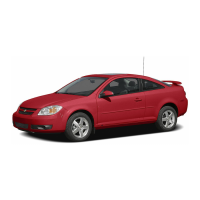





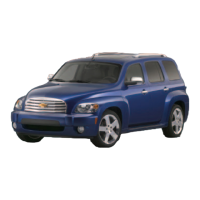
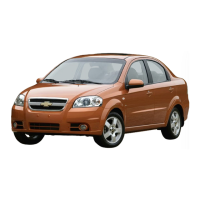
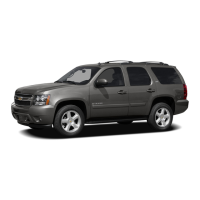


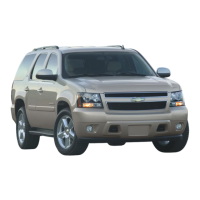
